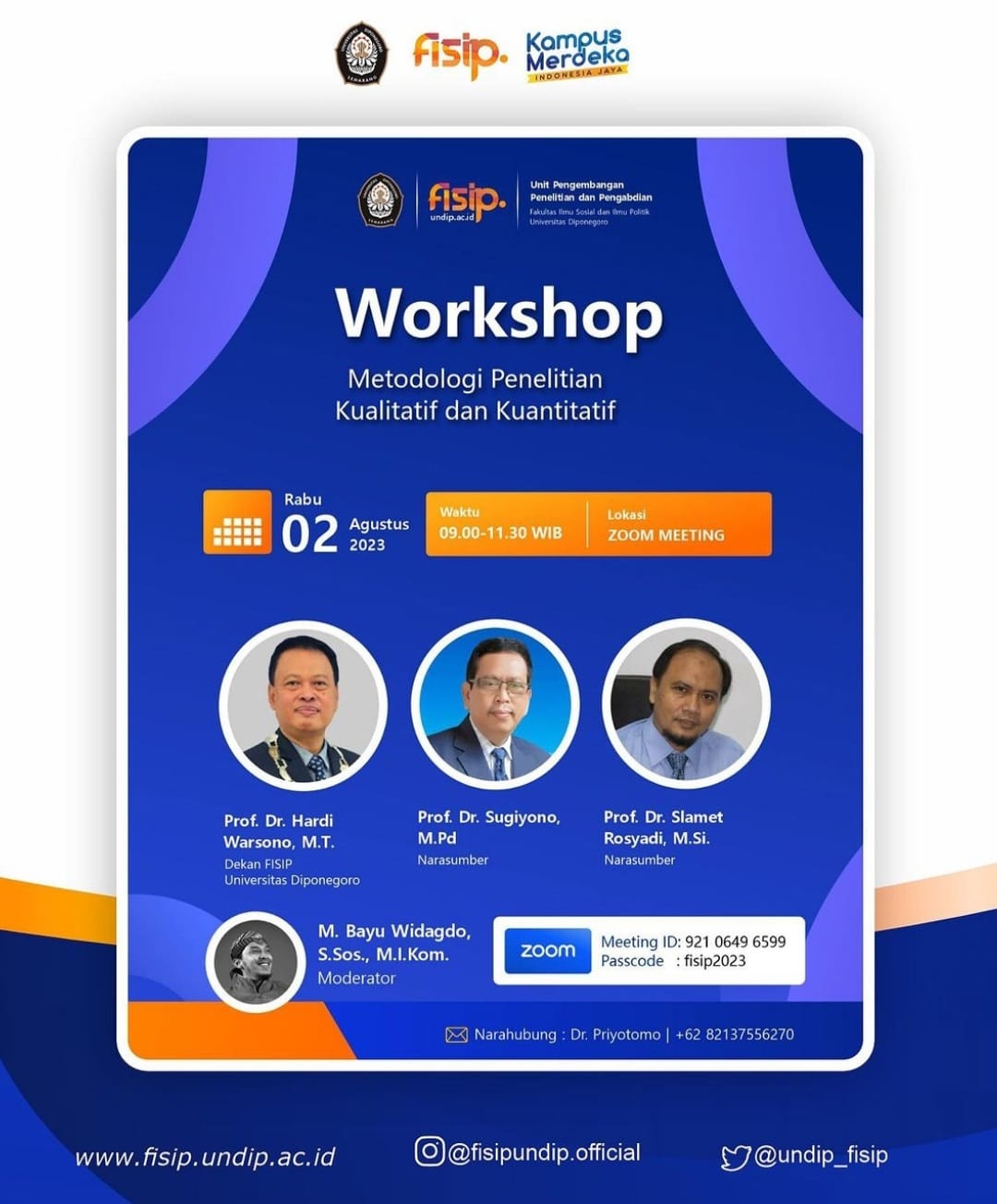The Research and Community Service Development Unit of the Faculty of Social and Political Sciences at Diponegoro University organized a Qualitative and Quantitative Research Methodology workshop on Wednesday (2/8) via Zoom meeting application. The speakers for this event were Prof. Dr. Sugiyono, M.Pd., and Prof. Slamet Rosyadi, M.Si., moderated by M. Bayu Widagdo, S.Sos., M.Si.
In his presentation, Prof. Sugiyono explained that the quantitative method can be defined as a research method based on rationalism/positivism philosophy, used to investigate a specific population or sample, data collection using research instruments, data analysis is quantitative/ statistical, with the aim of testing predetermined hypotheses.
“Quantitative method is used when researchers want to measure a specific variable or phenomenon, researchers want to obtain quantitative data from a large population, researchers want to know the effect of treatment on a result, researchers intend to test research hypotheses and make generalizations, and if they want to test doubts about the validity of knowledge, theories, actions, and certain products,” he explained.
Meanwhile, Prof. Slamet explained that qualitative data analysis is a technique that systematically organizes, integrates, and tests data (text)—finding patterns and relationships among specific data (specific) details or connecting specific data with concepts, proposing generalizations (concluding), and discovering trends or common themes.
“The qualitative data will be analyzed using the code book ‘behavior, collaboration, and motivation’. Behavior involves open communication, mutual support, good collaboration, and appreciation of contributions. Collaboration means working together to find solutions and improve overall project performance. While motivation involves motivating team members, providing opportunities to participate, and influencing project success,” he explained. (LW-Public Relations)

